Earlier this year, British watch brand Christopher Ward announced several changes to its Trident collection, ranging from increased water resistance, optimized dial layouts and lume to new ceramic bezel inserts for the mechanical versions. When asked if we were interested in reviewing one, we at DiveIntoWatches.com immediately went for the 42-mm GMT version, with racing-green bezel insert, since we felt this to be the most distinctive (and the most “British”) choice the brand has to offer.
Many people consider a dive watch with a GMT function to be the ultimate all-purpose watch, so for once we will not criticize the choice of a leather strap, since we deliberately decided against the many other options more suitable for use in water. Instead, let’s just enjoy the casual-looking combination of black, dark green, steel, brown, and a touch of yellow that would look perfectly at home in a Land Rover Defender. By the way, this choice also meant not getting our hands (at least for the moment) on Christopher Ward’s recently introduced in-house Caliber SH21, with a five-day power reserve, since it is first released as a limited edition displaying only the current time and date.
Speaking of availability: the Trident comes in two sizes (42-mm and 38-mm diameters), and is offered with either a quartz or a mechanical movement (SH21, ETA 2893-2, 2824-2, or SW200). Dials are available in white, black or blue; bezel inlays in red, blue, black, orange or green.
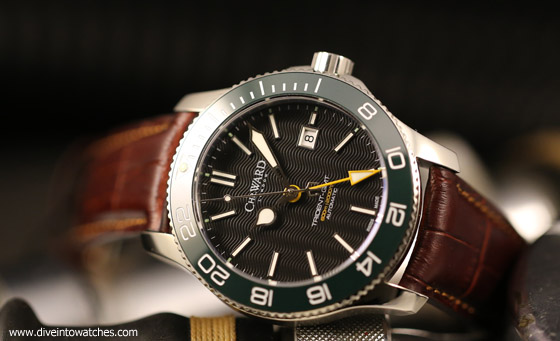
You can also choose between a bracelet and different strap options (leather, rubber or NATO), which leaves you with more than 100 different configurations. Prices start at £299.00 for the smallest quartz models and end at £1,599 for the limited, COSC-certified model with in-house movement, bracelet and 42-mm case. The watch shown here has a list price of £799.00 in the EC (and £665.83 outside the EC) and is sold directly via Christopher Ward’s website with a 60-day free return period.
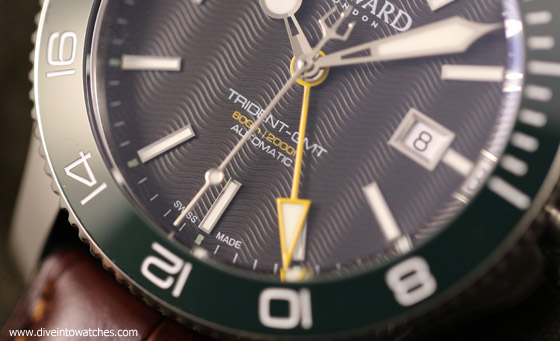
The C60 Trident GMT is powered by the well-known ETA 2893-2, which is also responsible for the yellow hand that adds a second timezone to the watch, bringing with it an interesting contrast to the black dial.
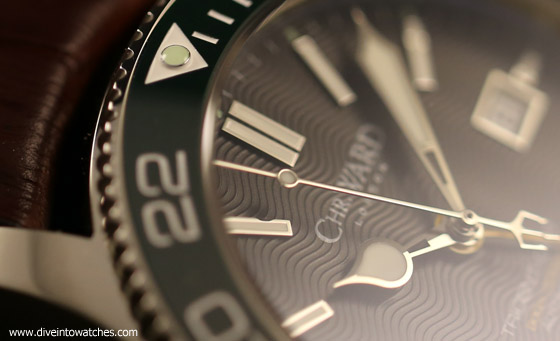
Speaking of hands, in this particular model, the edges of both minute and hour hand seem to be a bit rough, but (thanks to the more than 3-mm thick sapphire crystal) this is hardly visible from the naked eye. You will, however, notice that Christopher Ward went with a bezel inlay that combines the traditional first-15 minutes-scale on a dive-watch bezel with the 24-hour scale characteristic of a GMT watch (the bezel is also unidirectional). This will ultimately affect both functions, and we feel that in this case a 2-to-22 scale would have been better, even if we generally prefer the dive-watch look over that of a GMT watch.
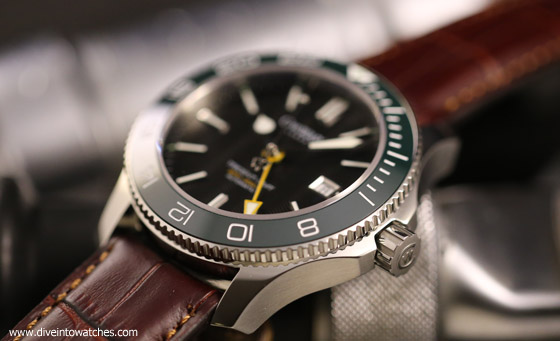
Despite that, there’s really not much else we found to criticize: The Trident can be regarded as an interesting option on many levels, regardless of whether you plan to dive or travel with it. Personally, we would probably have a lot of difficulties in deciding which version to go for: the new in-house movement should be the logical choice from a horological point of view; however, the GMT version is more affordable and, in our opinion, also more distinctive from a design perspective. Thankfully, we would at least have an easy decision between the 38-mm and 42-mm version.
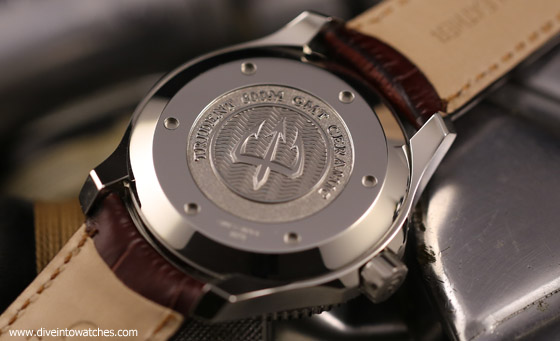
Nessun commento:
Posta un commento